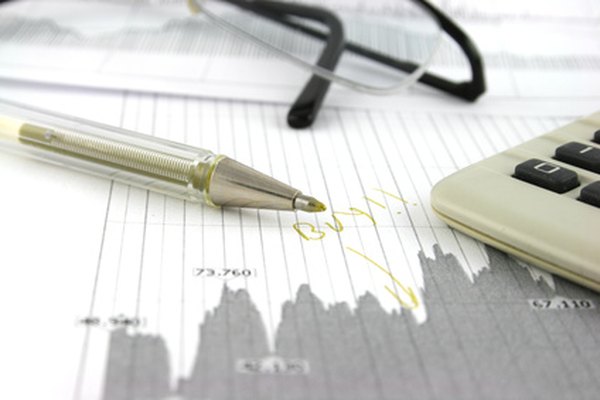What Is the Significance of a Closing Price on a Stock?
Investors use closing stock price for making investment decisions.
stocks and shares image by Andrew Brown from Fotolia.com
At the opening bell of the stock market, investors around the world take notice of the opening price of the market and individual stocks. Where the stock closes for the day determines how well or poorly a stock performed, which is a big deal for not only investors but also financial institutions and other stakeholders.
Tip
A closing price for a stock is the price at the end of a trading day. It's a standard figure watched by investors, financial institutions and other organizations making decisions about the stock and the company.
Understanding Stock Quotes
Before going into how closing stock prices work, it's important to go over the meaning of a stock's opening price, intraday high and low. If you've ever looked at a financial newspaper or visited a financial website such as Yahoo Finance and looked up a stock quote, you'll notice several prices listed for the same stock. The "open" is the starting price where the stock trades at the opening bell of the stock market.
The "high" is the highest at which the stock traded for the day and the "low" is the lowest price for the trading day. You'll also notice a "52-week range" for the stock. This is the highest and lowest stock prices for the stock over a one-year period.
The closing stock price is where the stock traded at the closing bell. For example, a stock quote for Apple Inc. shows a closing stock price of $174.18 on Feb. 5, 2019. The stock opened at $172.86 on that day.
The Importance of Closing Price
The closing stock price is significant for several reasons. Investors, traders, financial institutions, regulators and other stakeholders use it as a reference point for determining performance over a specific time such as one year, a week and over a shorter time frame such as one minute or less. In fact, investors and other stakeholders base their decisions on closing stock prices. Institutional investors monitor a stock's closing price to make decisions regarding their investment portfolios.
Adjusted Closing Prices
In some cases, if you look at historical stock price data, you'll see a note that some closing prices presented are actually adjusted closing prices. These reflect changes in prices caused by corporate actions such as stock splits, which replace each share of stock with a set of new shares in a particular ratio.
For example, in a 2-for-1 stock split, each shareholder will receive two new shares for each old share. If the stock was previously valued at $14, this will usually mean each new share is worth $7. After the split, old closing prices will be divided by two to adjust them and make them comparable to new, post-split closing prices.
Exploring Relevant Examples
Say an investor purchased 1,000 shares at $20 one year ago. The closing stock price is now $40. The investor decides to sell his shares to lock in a 100 percent return on his investment. A trader seeking to enter a trade notices that the closing stock price is significantly lower than it's been over the last two days.
He decides to "short" the stock with the expectation of the price falling lower. Shorting a stock means that he makes money if the stock declines in value. It's a process that lets investors borrow shares of the stock from other investors for a small fee, sell them and buy them back to return to the original owner at a later date.
Gaining Additional Insight
You may have heard the term "after-market" hours when it comes to stocks. This means that even though the stock market is closed, the stock is still available to trade. The New York Stock Exchange, NASDAQ and other markets have limited before and after hours trading.
In such a case, the stock's after-market price may be slightly different than the closing stock price or in some cases drastically different based on an unusual event such as the company reporting negative earnings after the stock market close.
Investors and other stakeholders use the disparity between the after-market and closing stock price to make investment decisions as well.

